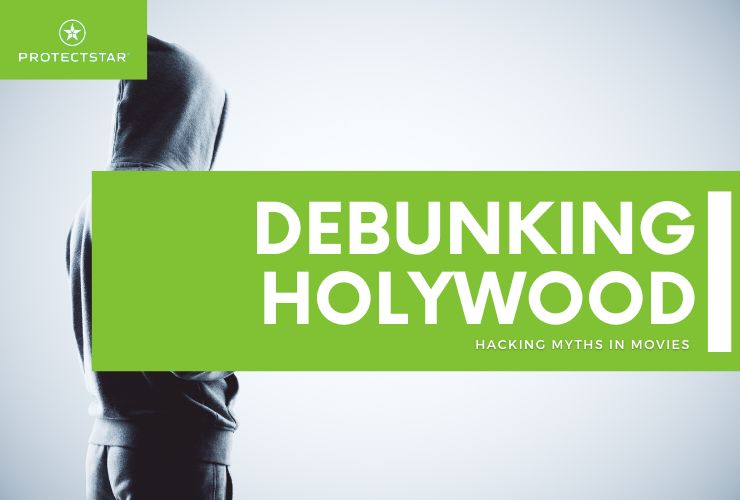Hollywood Hacked: Busting Myths About Hacking in Movies

Hollywood loves a good hacking scene. Fingers fly across keyboards, lines of code flash on the screen, and in a matter of minutes, the hero has infiltrated a seemingly impenetrable system. But how realistic are these portrayals? Let's debunk some common hacking myths from the silver screen:
Myth #1: Cracking the Impregnable Bank Vault
Movies love to depict hackers breezing past bank security firewalls with a few keystrokes. In reality, banks are bastions of cybersecurity, constantly fortifying their systems. Here's a glimpse into their real defenses:
- Multi-Layered Security: Banks utilize a layered defense approach, with each layer acting as a hurdle for attackers. Firewalls act as the initial barrier, filtering incoming traffic and blocking unauthorized access attempts. Intrusion Detection Systems (IDS) continuously monitor network activity for suspicious behavior, while Intrusion Prevention Systems (IPS) can automatically block identified threats.
- Authentication Odyssey: Gone are the days of simple username and password logins. Banks often employ multi-factor authentication (MFA), requiring additional verification steps like a code sent to your phone or a fingerprint scan. This significantly reduces the risk of unauthorized access even if a hacker steals your login credentials.
- Data Encryption: Banks understand the sensitivity of customer data. They encrypt sensitive information like account numbers and social security numbers, rendering it useless even if intercepted by hackers. Techniques like Advanced Encryption Standard (AES) make decrypting data without the proper key virtually impossible.
- Constant Vigilance: Banks employ dedicated security teams who monitor network activity 24/7, searching for anomalies and potential breaches. These teams are also constantly updating security protocols and conducting penetration testing (simulated attacks) to identify vulnerabilities before attackers can exploit them.
- Malware Marauders: Banks invest heavily in advanced anti-malware solutions that scan systems for malicious software designed to steal data or disrupt operations. These systems employ signature-based detection to identify known malware strains and also utilize behavioral analysis to detect and block zero-day attacks (previously unknown malware).
- Phishing Phantoms: Combating phishing attacks requires a multi-pronged approach. Banks educate their customers about phishing tactics and red flags to watch out for. Additionally, they employ email filtering systems that can identify suspicious emails containing malicious links or attachments.
Myth #2: National Security's Digital Doors Wide Open? Think Again
National security agencies like the CIA or NSA are prime targets for cyberattacks, yet their websites are some of the most secure in the world. Here's what safeguards their classified information:
- Air Gapped Systems: For the most critical data, national security agencies may utilize air-gapped systems, completely isolated from the internet. This prevents attackers from remotely accessing these systems through online channels.
- Zero Trust Architecture: Traditional security models focus on perimeter defense. Zero Trust flips that script, assuming that no user or device is inherently trustworthy. Every access attempt, regardless of origin, is rigorously scrutinized before granting access to sensitive information.
- Continuous Monitoring and Threat Hunting: National security agencies have dedicated teams of security analysts who constantly monitor network activity for suspicious behavior. They also employ threat hunters who proactively search for vulnerabilities and potential attack vectors used by adversaries.
- Advanced Intrusion Detection and Prevention: Similar to banks, government agencies utilize advanced intrusion detection and prevention systems. These systems are often customized to identify specific attack patterns used by known nation-state cybercriminals.
- Cryptography for the Classified: National security agencies leverage cutting-edge cryptographic techniques to safeguard classified information. Data is encrypted both at rest (stored on servers) and in transit (being transferred). Decrypting this data requires the attacker to possess the specific encryption key, a highly guarded secret.
So what's the reality of hacking?
Most hacking is far less glamorous than Hollywood portrays. Here's a more accurate picture:
- Social engineering: Hackers often target human vulnerabilities rather than technical ones. Phishing emails, fake websites, and social media scams are all common tactics used to trick victims into giving away passwords or clicking on malicious links.
- Exploiting vulnerabilities: Software bugs and outdated systems can create openings for attackers. Hackers spend a lot of time searching for these vulnerabilities and developing exploits to take advantage of them. However, patching these vulnerabilities is an ongoing battle, and new ones are discovered all the time.
- Patience and persistence: Successful hacking rarely happens overnight. It's more like a long game of chess, with attackers probing defenses, gathering information, and waiting for an opportunity to strike.
What can you do to protect yourself?
Here are some tips to keep yourself safe from hacking:
- Be cautious with emails and links: Don't click on suspicious links or attachments, even if they seem to come from someone you know.
- Use strong passwords and enable two-factor authentication: This adds an extra layer of security by requiring a second verification step, like a code sent to your phone, when logging in.
- Keep your software up to date: This ensures you have the latest security patches installed.
- Be aware of social engineering tactics: Don't give out personal information online unless you're absolutely sure who you're dealing with.
What are some hack-related movies you can think of?